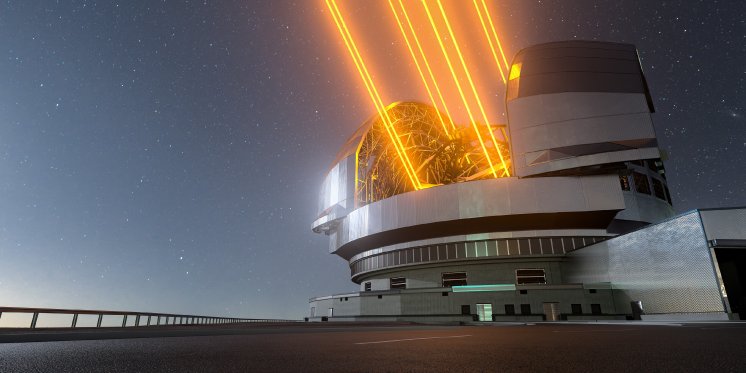With a tight schedule for the delivery of the remaining lasers (ELT could use up to eight guide star lasers) and “first light” for the telescope itself expected in the second half of the “twenties”, ESO seems to lead the race for the next-generation super telescope.
The guide star lasers for the adaptive optics system on the ELT are based on the laser systems that have successfully operated at the Very Large Telescope (VLT) since 2016 as part of the Adaptive Optics Facility (AOF), which has shown spectacular improvements in image sharpness (eso1824).
Adaptive optics compensate for the blurring effect of the Earth’s atmosphere, enabling astronomers to obtain much sharper images. Lasers are used to create multiple artificial guide stars high in the Earth’s atmosphere. These points of light are used as reference light sources to allow the adaptive optics system to compensate for turbulence in the Earth’s atmosphere. Unlike natural guide stars, laser guide stars can be positioned anywhere to allow the full power of adaptive optics to be used over almost the entire sky. The ELT will employ incredibly sophisticated 'adaptive optics' technologies to ensure its images are sharper than those of any other telescope.
Anticipated observations enabled by the ELT’s powerful built-in adaptive optics system include everything from studying black holes to investigating some of the youngest galaxies in the distant universe.

